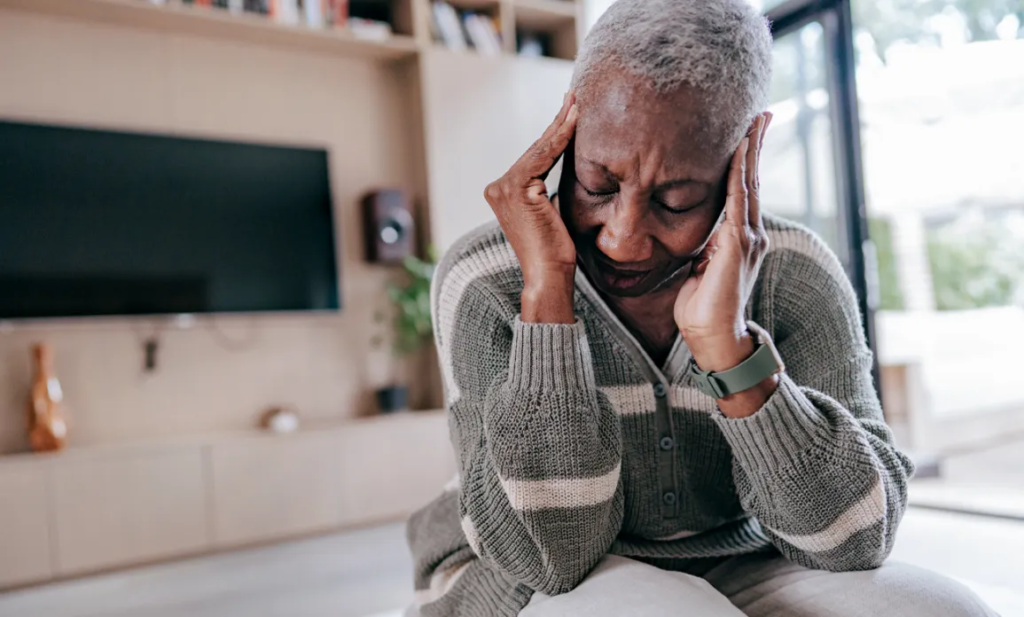Have you or anyone you know experienced a stroke? The odds are very good that you do. Stroke is a major contributor to long-term disability rates in both the United States and the rest of the developed world. Read on to know more about, Stroke: Understanding Risks, Signs, and Prevention.
Stroke occurs more frequently among African Americans than among any other demographic. Strokes are the leading cause of death in African Americans, and studies show that their rate is nearly double that of Caucasians. Therefore, it is essential to acquire a deeper understanding of potential causes, early warning signs, and preventative measures. Stroke risk has been linked to COVID-19 in recent years, which is an important finding.

What Exactly is a Stroke?
A stroke is a sudden interruption in the flow of blood to the brain. This can be caused by a blockage or clotting in an artery leading to the brain (an ischemic stroke). It can also be caused by a rupture in a blood vessel that leads to excess blood in brain tissue (a hemorrhagic stroke). Either way, brain cells do not receive the proper amount of oxygen from regular blood flow and begin to die, disrupting the ability of the brain to control cognitive ability and muscle function in the body. Because it usually happens quickly and requires immediate treatment, a stroke is often referred to as a “brain attack.”
Effects of a Stroke
When a stroke happens, the impact can vary widely depending on the area of the brain that has been injured. Sudden weakness, numbness, headache, or difficulty speaking are common warning signs. Others include:
Vision problems
Nausea and vomiting
Face drooping
Weakness in only one arm or leg
Dizziness and confusion
Balance difficulty
Neck stiffness
A massive stroke, with significant blood loss to the brain, can cause even more serious consequences, including paralysis, coma, and death.
Risk Factors and Prevention Tips
There are many factors that can increase the chances of stroke:
Smoking
Alcohol consumption
Obesity
Heart disease
High blood pressure
High cholesterol
Lack of physical activity
Diabetes
Sickle cell anemia
While some of these factors are outside of an individual’s control, such as family health history of strokes, but many other factors can be addressed through changes in lifestyle and diet.
Things that can help lead to better health and, by extension, lowered risk of stroke include:
A diet with 3–4 daily servings of fresh fruits and vegetables
Foods high in fiber and low in sodium
Regular exercise
Maintaining a healthy weight
Quitting smoking
Eliminating or minimizing alcohol intake
Treatment of stroke with drugs
For those who have had a stroke, there are a number of drugs available—in combination with careful oversight by a physician—that can help mitigate the occurrence of another stroke. These include anticoagulants (popular brands include Eliquis® and Xarelto®) which disrupt the blood clotting process to prevent new clots from forming and prevent existing clots from getting bigger. Antiplatelet drugs (such as Plavix) work similarly by preventing blood platelets from sticking to one another, the first step in forming clots. If a person is experiencing a stroke, a tissue plasminogen activator (tPA) is a common emergency drug administered through injection that quickly breaks up blood clots.
Statins are another popular type of drug designed to help address strokes. Instead of targeting blood clots, statins help to lower high cholesterol levels. When cholesterol levels are elevated, they create build-up on artery walls, called plaque, that can lead to dangerous blockages.
COVID-19 and stroke
The incidence and risk of stroke increase with age; approximately 50% of all strokes occur in people over age 75 and 30% over age 85. However, it was recently discovered that COVID-19 can actually raise the risk of stroke among young and middle-aged adults. Unlike other viral infections, increased clotting of blood had been seen in younger COVID-19 patients who otherwise had few or no stroke risk factors. So while older and immuno-compromised individuals are still at the highest risk of health complications from COVID-19, those who are younger and/or in good overall health can become at risk for stroke if they are infected.

Looking ahead
While there are many variables that factor into any individual’s likelihood for stroke, the good news is that proactive management of chronic conditions, such as diabetes and high blood pressure, and healthy lifestyle and eating choices have proven to be effective in lowering the risk. Even in this unprecedented environment of a global viral threat, following evidence-based and common-sense health guidelines can help prevent you or your loved ones from the threat of stroke.